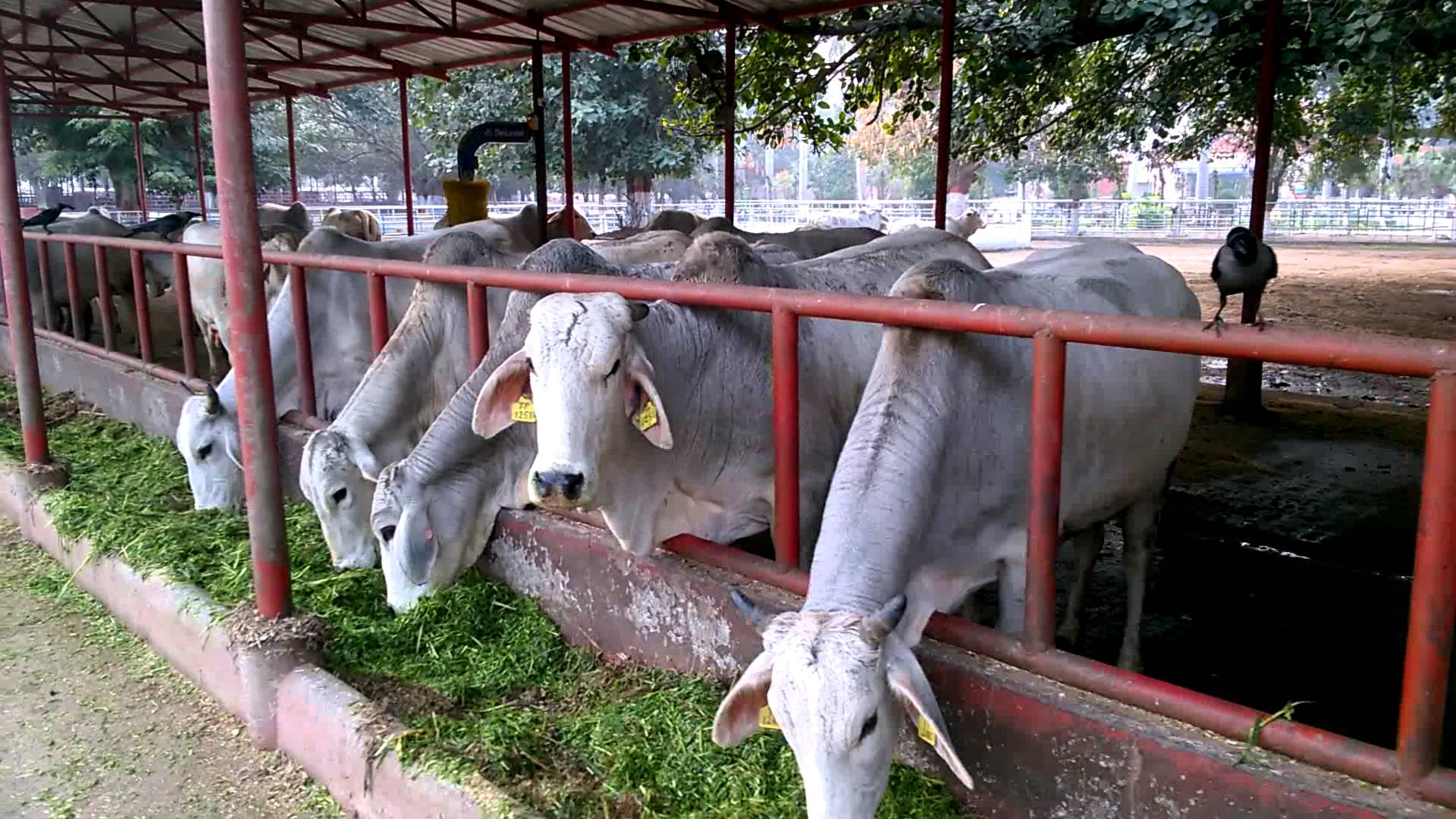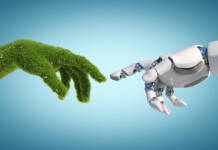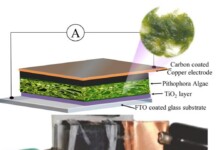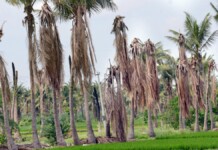India has a third of world’s cattle population with nearly one livestock for three Indians. In contrast, only 20 Indians among 1000 own a car. Globally, cattle contribute to between 14% and 18% of harmful gases while automobile contribution is about 14%.
Interestingly, in India, cattle and cars are growing at more or less the same rate at slightly above 10% a year. What’s scary is that cattle may be contributing to a third or more of India’s greenhouse gas emissions?
What do these numbers mean to India’s fight against climate change? While a massive effort is underway for controlling pollution from cars, isn’t it high time India came up with a master plan to reduce its cattle population significantly if it’s to meet commitments made at the 2015 Paris Climate Summit?
By Benedict Paramanand
The climate change debate is throwing up strange statistics. According to data published by EcoWatch recently, which quotes United States Environmental Protection Agency, cattle produce 14% to 18% harmful carbon-di-oxide and methane while automobile emit about (14%) (http://www.ecowatch.com/which-is-worse-for-the-planet-beef-or-cars-1919932136.html). Will this data, then, move the frontal attack, even if temporarily, away from the automobile sector by the environment lobbies world over to cattle?
If this data is true in an automobile clogged streets and heavy meat diets in the West, the scenario plays out quite interestingly, even differently in India. India has fewer automobiles and many times more cattle while both numbers are growing in double digits.
Although India’s cow population increased by more than 10% according to the 2012 census compared to last census in 2007, the number of bulls, has dropped 19%. Overall, the population of cattle other than cows and buffalos – like camels, donkeys, goats fell significantly – by nearly 20%.
India is the fourth largest exporter of beef in the world – behind Brazil, the European Union and China. Despite the stigma attached to beef eating since 2014, India’s beef production has gone up and was estimated to be at 4.5 million tons in 2016 compared to less than 4 mt in 2014. It exports more than half that number. Most of it is known to come from buffaloes and the rest from other cattle, according to data from the Department of Animal Husbandry, Dairying and Fisheries.
According to USDA’s 2016 data, India has the largest number of cattle in the world at 30.66% followed by Brazil 22% and China 10% and US at 9.4%. With this data on hand, can India come up with a viable strategy to cut methane (23 times more harmful than CO2) and CO2 by significantly reducing its cattle population in a sustained manner in the next couple of decades? This is a complex challenge since cattle in India has religious and social significance than just as a source of protein.
Possible solutions
Eliminate stray cattle from cities and towns.They are a huge traffic hurdle and contribute to air pollution in cities as well. This could be done by moving them out to an arid government land outside the city by municipalities. Goshalas or cow shelters are there in many towns but they lack capacity. This way, the dung can be used to generate gas and supplied to nearby villages which in a way can take care of the cost of feeding the cattle. Dead cattle too have economic benefits.
The collateral benefit of a better waste management system in towns and cities is reduction in stray animals such as pigs and dogs – resulting in lower CO2 emissions.
Increase production efficiency of milk.India is the largest producer of milk in the world but one of the least efficient. An increase in the efficiency of milk production by even 10% could easily be done with at least 5% fewer cows. Modernization of farming will reduce use of cattle in rural areas for farming. A steady rise in contract farming can reduce small holdings which are resource inefficient.
Reduce meat consumption.This is an easier solution in developed countries as meat is their staple food. In poor countries, meat offers one of the cheapest sources of protein. Efficient ways of meat production, like it is done for exports, is one of the options. Research on meat-like products offers hope.
And the question whether India should engage in meat exports is a tough question that needs to be asked. Is the consumer outside India paying for pollution in India? Perhaps a pollution tax on meat exporters is needed and the proceeds from that can be used for growing more trees or even funding goshalas. There is a noticeable drop in non-cow cattle population while cow numbers are going up by more than 10%.
Reducing the size of cattle head doesn’t seem to be part of India’s fight against climate change. Considering the enormity of the challenge and India’s strong commitment to Paris Climate summit targets, a well planned and funded strategy to reduce cattle size will become inevitable soon.
Brazil Thrives on Indian Cattle Breed
While It’s Sharply Declining in India
Between 1997 and 2012, according to the government’s successive livestock census, India’s indigenous cattle population declined by over 15% from 178 million to 151 million, less than what we began with at the time of independence (155 million), when all cattle were indigenous breeds. Fifty years of sustained white revolution policy interventions to enhance milk production have actively advocated and financed replacement of indigenous cattle with high yielding breeds. Cross breeds like Jersey and Holstein Friesan now comprise some 21% of India’s cattle population. But even India’s total cattle population, including crossbreds has increased by a mere 23% (from 1951 to 2012) and stands at 190 million.
In stark contrast, Brazil’s cattle population – comprising 80% pure Indian cattle breeds (Indicine) or Indian cattle breed crossed cattle – grew by 74% from 56 million in 1965 to 214 million today. The Gir, which is the favoured dairy breed, comprises 10% of Brazil’s cattle population. The Ongole (or Nellore), which is the mainstay of beef production, makes up most of Brazil’s cattle population. The Ongole of India, however, is a threatened breed in its
own homeland.
Source: The Wire (https://thewire.in/13849/why-the-ban-on-cow-slaughter-is-not-just-anti-farmer-but-anti-cow-as-well/)












what a preposterous assumption that reduce cattle and increase cars per person, by corollary. What then happens to the food security, milk availability for the impoverished children of the country. Any international convention cannot be above the fulfillment of the basic needs of a 130 crore strong population where malnutrition still is a significant challenge. Can the developed countries reduce some of their excessive consumption to be more responsible global citizens please !
98% of the world’s biomass is comprised of humans and the animals that humans domesticate (this is excluding all micro-organisms)
This means that humans have driven almost all other species to extinction. The beauty of nature is in its diversity and it is this diversity that helps biological systems clean themselves. Something that human intervention is impeding.
Milk, by the way, is not something that humans can inherently digest. I do agree that milk is an easily accessible and cheap source of nourishment for children, but inspite of India accounting for 18.5% of the world’s milk production, 30% of Indian children under the age of 3 are underweight and a lot more are wasted and stunted.
Like the article said, we need more efficient cattle management systems in place and I am curious to know about the distribution of milk in India.
But I digress. Yes, there is a western demand, but there is an increasing demand for beef in India as well and I am curious as to how this issue has been under wraps for so long. I am sure environmental watchdogs and research organisations must have known this for a while.
There is a very poignant documentary on this secrecy called Cowspiracy: The Sustainability Secret that I would recommend
[…] https://sustainabilitynext.in/cover-story/why-india-needs-fewer-cattle-than-cars/ […]